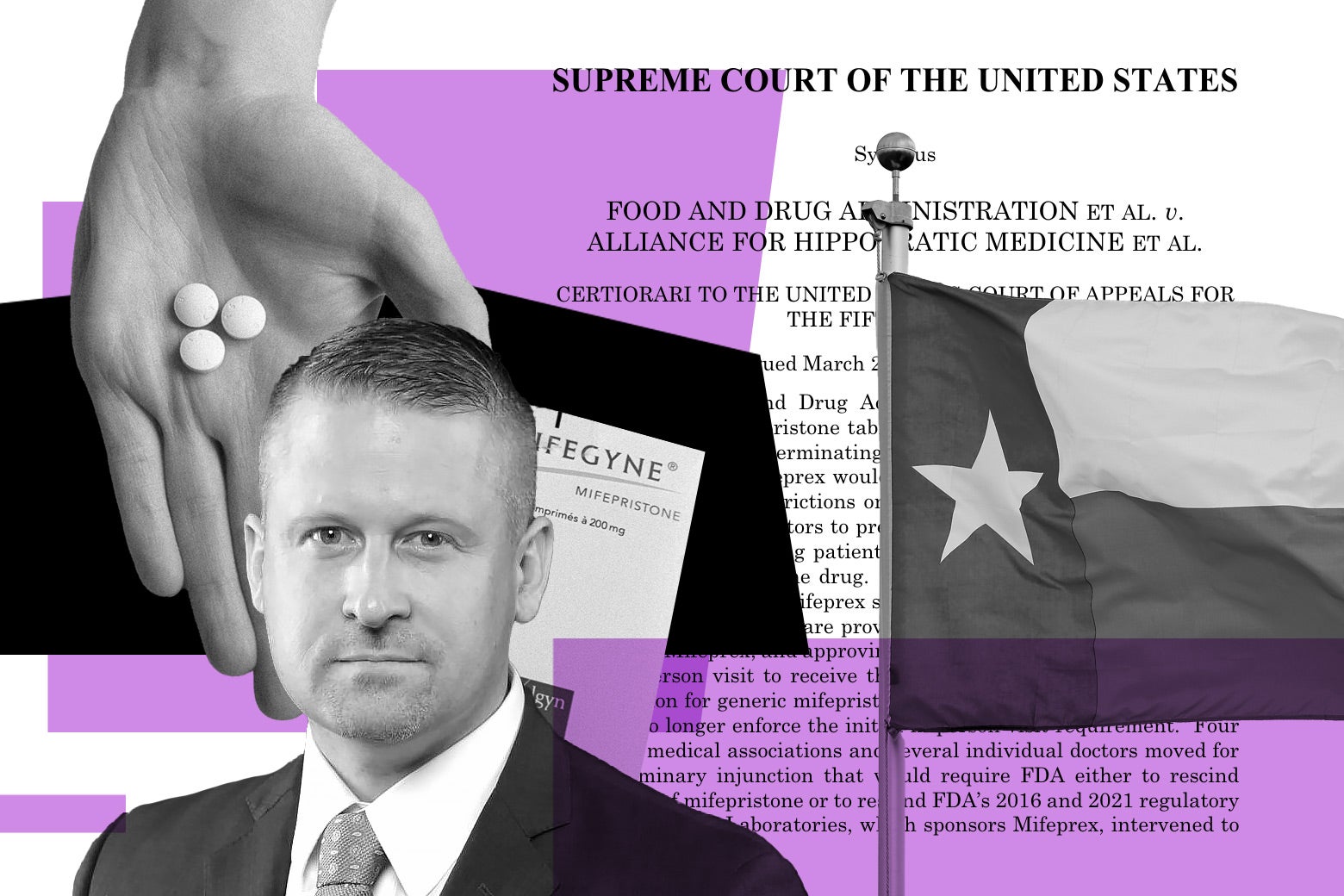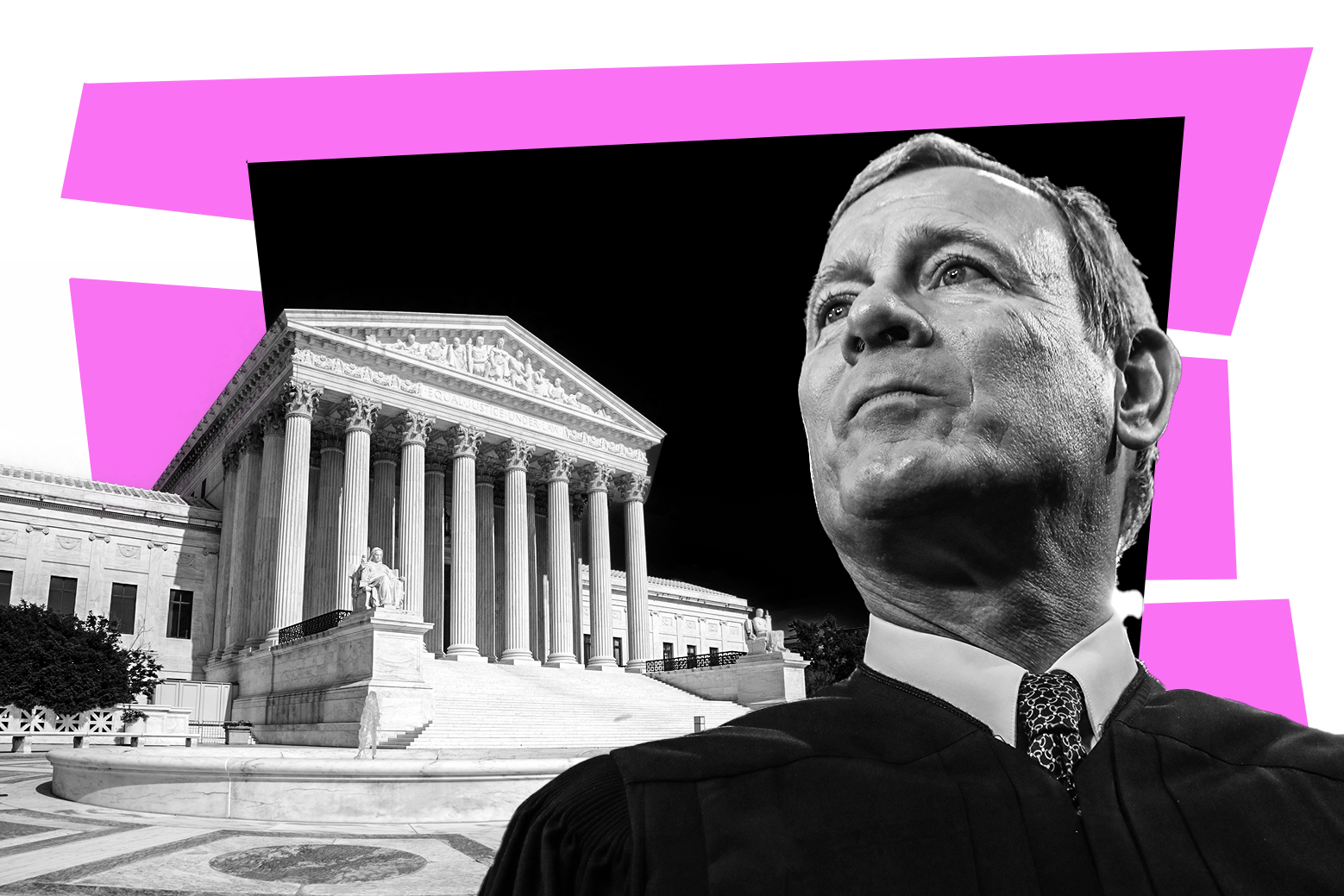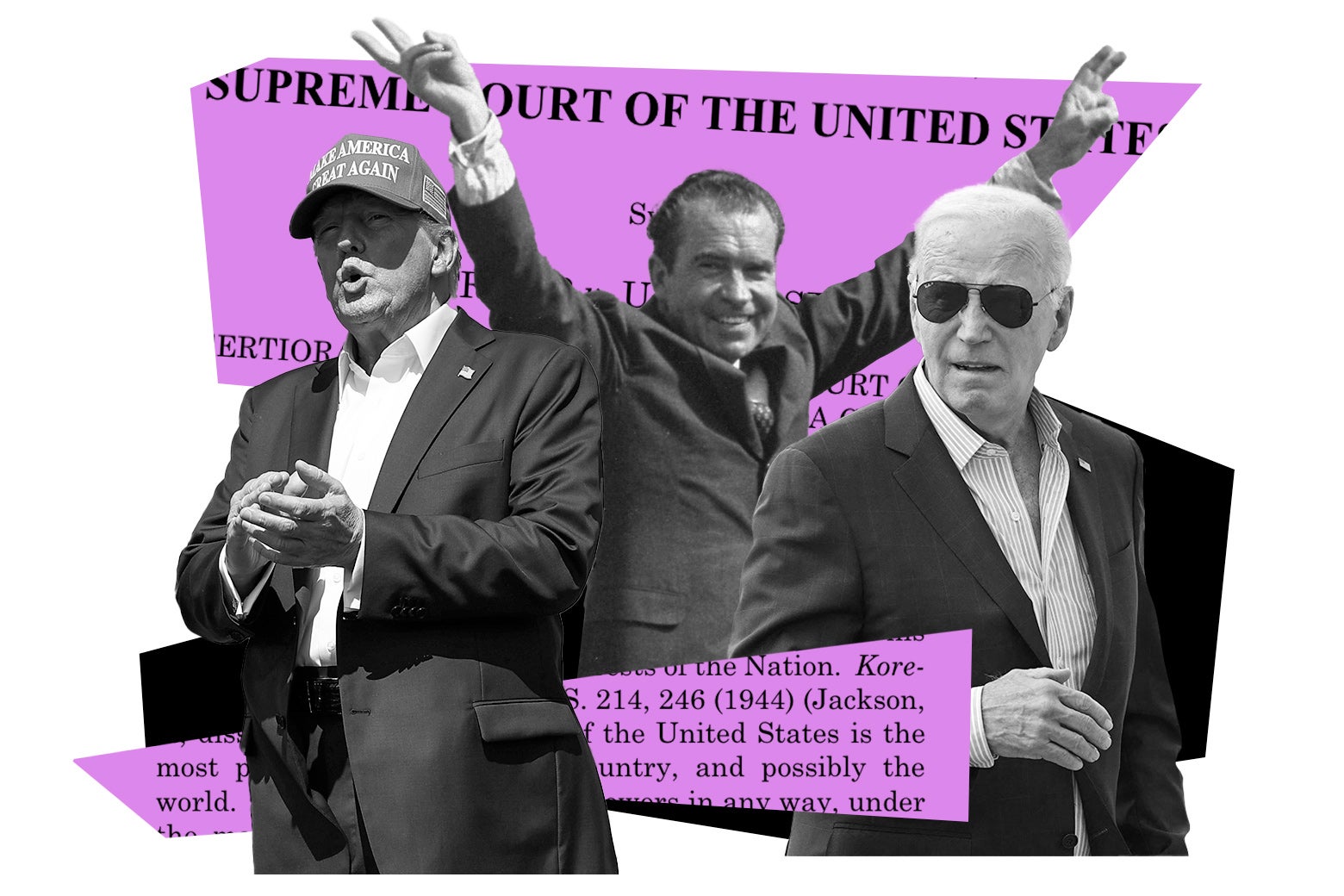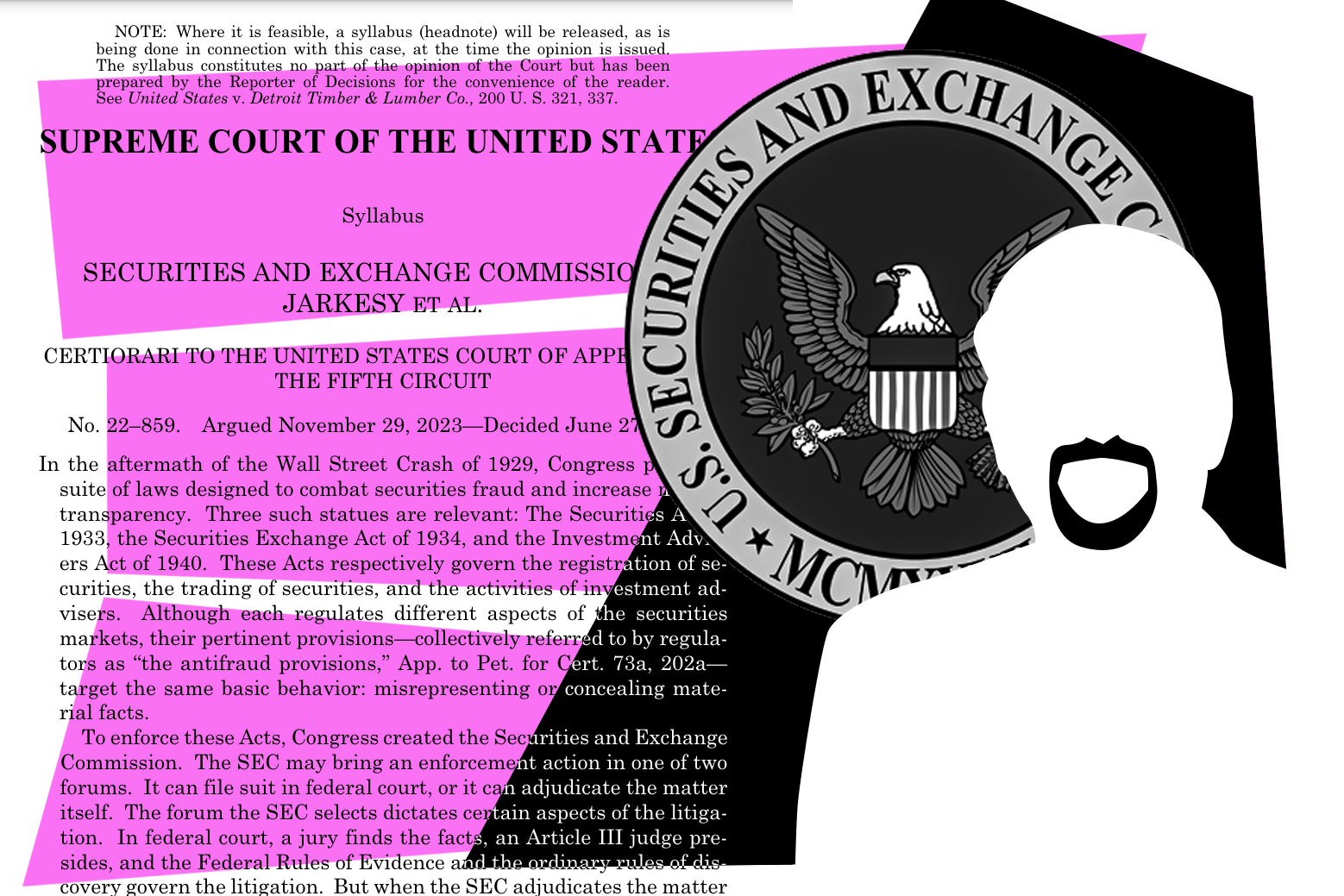Opinionpalooza is Slate’s coverage of the major decisions from the Supreme Court this June. Alongside Amicus, we kicked things off this year by explaining How Originalism Ate the Law. The best way to support our work is by joining Slate Plus. (If you are already a member, consider a donation or merch!)
The end of the 2023–24 Supreme Court term is upon us. It’s shaping up to be a bit of a whirlwind, as SCOTUS is still sitting on a number of big cases, and it seems as if they’re all going to come down in incredibly rapid succession.
To help you keep track of everything, and in an effort to convey the real stakes of what is going to happen to American law this term, we’re compiling a case tracker below. And if you’re new here and not sure where to start, we’ve got you: This explainer breaks down the basics, while Dahlia Lithwick and Mark Joseph Stern are regularly detailing the bigger picture behind the court’s decisions on the Amicus podcast.
The Stakes
Right now there is a conservative supermajority on the court—six justices were appointed by Republican presidents, and just three were appointed by Democratic presidents. The reality of this imbalance hit home in 2022, when the majority reversed 50 years of precedent in overturning Roe v. Wade. And with so many parts of government currently deadlocked, decisions from the court end up enacting some of the biggest changes in American life.
A disproportionate number of these decisions are regressive, overruling settled law and imposing hard-right policies favored by the GOP. That can be attributed in part to the prevailing legal theory that has captivated so many of the justices: an interpretation of the law that purports to prioritize the original meaning of the Constitution—you know, back when most Americans had no rights at all. This year, to welcome the end of the term, Slate’s legal analysts created a whole package and special podcast series dedicated to this theory, its origins, and the ways we can stop it. Read it here.
The Cases
This term, the court accepted a historically low number of cases: just under 60. Yet a huge number of the cases that were chosen are politically charged, controversial blockbusters—and the justices have saved the bulk of them to decide in June. “What they’re doing is investing their time in these high-profile cases that take more of their time, more of their energy,” Georgetown law professor Stephen Vladeck explained in conversation with Lithwick and Stern. “They have so many of these high-profile cases that they just don’t have room for the lower-profile stuff.”
The forthcoming opinions from the Supreme Court will cover a wide range of issues, and some of the most consequential ones will decide the future of abortion medication, whether domestic abusers have a constitutional right to own a gun, if Donald Trump is immune from criminal prosecution for actions he took while president, and more.
Here are a handful of cases we are closely watching.
The Abortion Cases
• FDA v. Alliance for Hippocratic Medicine challenges the legality of the abortion drug mifepristone. A group of anti-abortion doctors argues that the legality of the medication forces them to be complicit in abortion, because one day they could treat a patient experiencing complications from the drug if it was prescribed by a different doctor. The Food and Drug Administration argues that mifepristone has been safely used by millions of Americans since it was approved in 2000.

BY DAHLIA LITHWICK AND MARK JOSEPH STERN
BY SHIRIN ALI
BY DAHLIA LITHWICK AND MARK JOSEPH STERN

BY JOSHUA PERRY
BY REVA SIEGEL AND MARY ZIEGLER
BY CARRIE N. BAKER
• Moyle v. United States considers whether states must follow a federal law, known as EMTALA, that directs doctors to provide stabilizing care—including medically indicated abortion—for any patient in an emergency room, even if it conflicts with the state’s own abortion ban. This appeal was brought by the state of Idaho, which has a law that allows abortion only to prevent the death of a pregnant woman.

BY MARK JOSEPH STERN
BY DARA KASS
BY REVA SIEGEL AND MARY ZIEGLER
The Gun Cases
• Rahimi v. U.S. considers whether the Second Amendment allows people who are subject to domestic violence restraining orders to purchase guns. The case was brought by Zackey Rahimi, a Texan who has been convicted on multiple gun-related charges and was banned from buying firearms. This case hinges on how the justices will apply a standard they themselves set in a separate gun case in 2022, New York Rifle and Pistol Association v. Bruen, which affirmed that restrictions on guns must be consistent with the country’s “historical tradition of firearm regulation.”

BY MARK JOSEPH STERN
BY RIA TABACCO MAR
🎧
AMICUS
Subscribe:
BY DAHLIA LITHWICK AND MARK JOSEPH STERN

BY SAUL CORNELL
BY GEMMA DONOFRIO
BY DANA BAZELON
• Garland v. Cargill will decide the legality of bump stocks under federal law. It questions a regulation that the Trump administration enacted after the Las Vegas massacre that banned bump stocks—a device that, if attached to a rifle, can drastically increase the number of bullets fired, making a rifle fire like a machine gun. This case will come down to how the justices interpret the literal mechanics of federal law and how it defines machine gun.

BY MARK JOSEPH STERN
BY DAHLIA LITHWICK AND MARK JOSEPH STERN
🎧
Amicus
Subscribe:
The Immunity Cases
• Fischer v. U.S. argues that a 2002 obstruction law that the DOJ has used to charge 350 rioters on Jan. 6 has been misused. Joseph Fischer, one of those rioters, is being charged with seven felonies, and he argues that the obstruction law is referring to document destruction because it was created in the aftermath of the Enron scandal. The government has defended use of the law, noting that nothing like the Jan. 6 assault on the Capitol has ever happened in U.S. history. The outcome of this case will directly affect Donald Trump’s prosecution too, since special counsel Jack Smith has also charged Trump under this obstruction law.
BY RICHARD L. HASEN
• Trump v. U.S. addresses a question at the heart of Trump’s federal election-interference indictment: Is a former president protected from criminal prosecution under a heretofore unknown doctrine of presidential immunity? This case was expedited to the Supreme Court in February, and during oral arguments, the justices seemed open to Trump’s defense. “To at least five of the conservatives, the real threat to democracy wasn’t Trump’s attempt to overturn the election—but the Justice Department’s efforts to prosecute him for the act,” Lithwick and Stern wrote in Slate.

BY MARK JOSEPH STERN
BY RICHARD L. HASEN
BY DAHLIA LITHWICK AND MARK JOSEPH STERN

BY SAMUEL W. BUELL AND DARRELL A.H. MILLER
BY FRANK BOWMAN
The Internet and Social Media
• Moody v. NetChoice LLC and NetChoice LLC v. Paxton will determine the future of content moderation on the internet. A trade association representing all the major social media companies sued Texas and Florida for laws they enacted in the aftermath of Donald Trump getting kicked off Facebook and X for his posts on Jan. 6. The laws were enacted under the premise that social media companies cannot remove content because that would amount to “censorship.” However, the social media companies argue that they are private actors and can claim a First Amendment right to moderate content that appears on their platforms.
BY RICHARD L. HASEN
• Murthy v. Missouri will decide whether the government can encourage social media companies to take down disinformation spread by users. Missouri and Louisiana both argue that the Biden administration violated their residents’ First Amendment rights when it asked social media companies to remove lies about COVID-19 vaccines and the 2020 election. The government argued that it hadn’t engaged in coercion but had simply encouraged social media platforms to enforce their existing rules around misinformation.
BY MARK JOSEPH STERN
Whether the Government Can Enforce the Law
• Jarkesy v. SEC takes aim at the federal government’s ability to penalize private companies that violate public rights—think securities fraud, consumer scams, environmental crimes, labor violations, etc. George Jarkesy is a conservative talk-radio host who also manages $24 million in assets and was fined by the SEC for unlawful gains and banned from the securities industry. Jarkesy wants to strip the SEC of its enforcement power and argues that its actions are unconstitutional. This is a complicated case that comes down to allowing the federal government to hold on to its enforcement powers.

BY SHIRIN ALI AND MARK JOSEPH STERN
BY ALAN B. MORRISON
BY DAHLIA LITHWICK AND MARK JOSEPH STERN
🎧
AMICUS
Subscribe:
• Loper Bright Enterprises v. Raimondo and Relentless v. Department of Commerce mark efforts to overturn “Chevron deference”—the 40-year-old principle that federal courts should defer to federal agencies’ interpretation of ambiguous laws. If the conservative justices kill Chevron, they will make it substantially more difficult for presidents, especially Democrats, to interpret and execute countless regulations.
BY MARK JOSEPH STERN

BY DAVID L. FRANKLIN
BY DAHLIA LITHWICK AND MARK JOSEPH STERN
🎧
AMICUS
Subscribe:
BY AUSTIN SARAT
Compiled by Shirin Ali.